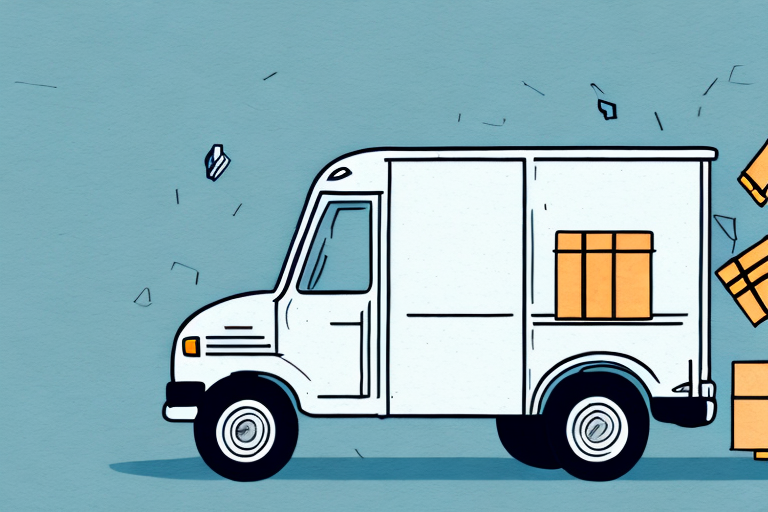Understanding Express Service Delivery
Express service delivery is a type of shipping service that guarantees the delivery of goods within a specific timeframe, typically within 1-3 days. This expedited shipping option is faster and more reliable compared to traditional shipping methods, such as ground or sea shipping, which can take several days or even weeks. Available for both domestic and international shipments, express service delivery offers convenience for businesses needing to deliver products swiftly to customers worldwide.
Real-Time Shipment Tracking
One significant advantage of express service delivery is the ability to track shipments in real-time. Most express delivery services provide customers with a tracking number to monitor the progress of their shipment from departure to arrival. This enhanced visibility allows businesses to manage inventory more effectively and ensure timely delivery to customers.
Benefits of Express Service Delivery
Faster Delivery Times
Express service delivery significantly reduces delivery times, enabling businesses to meet urgent customer demands and enhance satisfaction. In e-commerce, where timely delivery is a critical factor in customer retention, express shipping can provide a competitive edge.
Improved Reliability and Customer Service
Express delivery companies often offer personalized support, ensuring shipments are handled with care and delivered punctually. This reliability is essential for maintaining smooth operations and fostering customer trust.
Enhanced Control Over Shipments
With options like tracking and insurance, businesses have greater control over their shipments. This reduces the risk of lost or damaged goods, minimizes inventory storage needs, and improves overall supply chain efficiency.
Drawbacks of Express Service Delivery
Higher Shipping Costs
Express service delivery typically incurs higher costs compared to standard shipping methods. Businesses must weigh these costs against the benefits of faster delivery to determine if it's a viable option for their operations.
Limited Destination Coverage
Express services may not be available for all destinations, potentially limiting a business's ability to deliver to certain regions. It's essential to verify the coverage area of express providers when planning shipping strategies.
Risk of Damage or Loss
The expedited nature of express shipping may lead to less careful handling of packages, increasing the risk of damage or loss, especially for fragile or valuable items.
Cost Analysis: Express vs. Standard Shipping
The cost of express service delivery is influenced by factors such as shipment weight and size, distance, and delivery timeframe. While more expensive per shipment, express delivery can save money long-term by reducing losses and enhancing supply chain efficiency.
According to a study by UPS, businesses can see up to a 15% increase in customer retention by offering faster shipping options. This suggests the higher costs may be offset by increased sales and customer loyalty.
Selecting the Right Express Delivery Provider
Evaluating Delivery Timeframes and Rates
Select a provider that aligns with your delivery speed requirements and budget. Compare rates among different express services to find the most cost-effective solution for your business needs.
Assessing Coverage and Reliability
Ensure the provider covers your desired destinations and has a reliable track record for on-time deliveries. Check customer reviews and industry ratings to gauge their performance.
Customer Support and Additional Services
Opt for providers that offer robust customer support and additional services such as tracking, insurance, and package handling options. These features provide added security and peace of mind.
Environmental Impact
Consider the environmental policies of potential providers. Many companies now offer eco-friendly delivery options, such as using electric vehicles or implementing carbon offset programs, which can enhance your brand's sustainability credentials.
Implementing Express Service Delivery in Your Business
Planning and Scheduling Shipments
Effective planning involves scheduling shipments in advance to optimize costs and ensure timely deliveries. Utilize forecasting tools to anticipate shipping needs and manage peak demand periods efficiently.
Optimizing Package Size and Weight
Choose appropriate packaging materials and shipping options based on the size and weight of your products. This can help reduce shipping costs and prevent damage during transit.
Communicating with Customers
Maintain clear communication with customers regarding shipment status and potential delays. Providing accurate tracking information enhances transparency and builds trust.
Overcoming Challenges of Express Service Delivery
Managing Higher Costs
Negotiate rates with your express provider and consider consolidating shipments to reduce overall shipping expenses. Balancing cost with delivery speed is essential for maintaining profitability.
Ensuring Shipment Accuracy
Implement strict quality control measures to verify shipping information and prevent errors. Utilize tracking and insurance options to monitor shipments and quickly address any issues that arise.
Real-World Examples of Successful Express Service Delivery Implementation
Companies like Amazon have leveraged express service delivery through their Prime program, offering two-day shipping to millions of customers. Additionally, FedEx provides services such as FedEx Express Saver and FedEx SameDay to cater to varying business needs across industries.
The Future of Express Service Delivery and Its Impact on E-Commerce
As e-commerce continues to grow, the demand for fast and reliable shipping options increases. Innovations in technology and automation are set to further enhance the efficiency and reduce the costs of express service delivery. Predictions indicate a continued rise in the adoption of express shipping, driven by consumer expectations for rapid delivery and seamless online shopping experiences.
Integrating Express Service Delivery into Your Logistics Strategy
To seamlessly incorporate express service delivery into your existing logistics framework, assess your shipping requirements and identify which shipments warrant expedited shipping. Select a provider that offers reliable and affordable express options, establish transparent communication channels with customers about shipment statuses, and consistently monitor shipments to ensure a smooth delivery process.






















